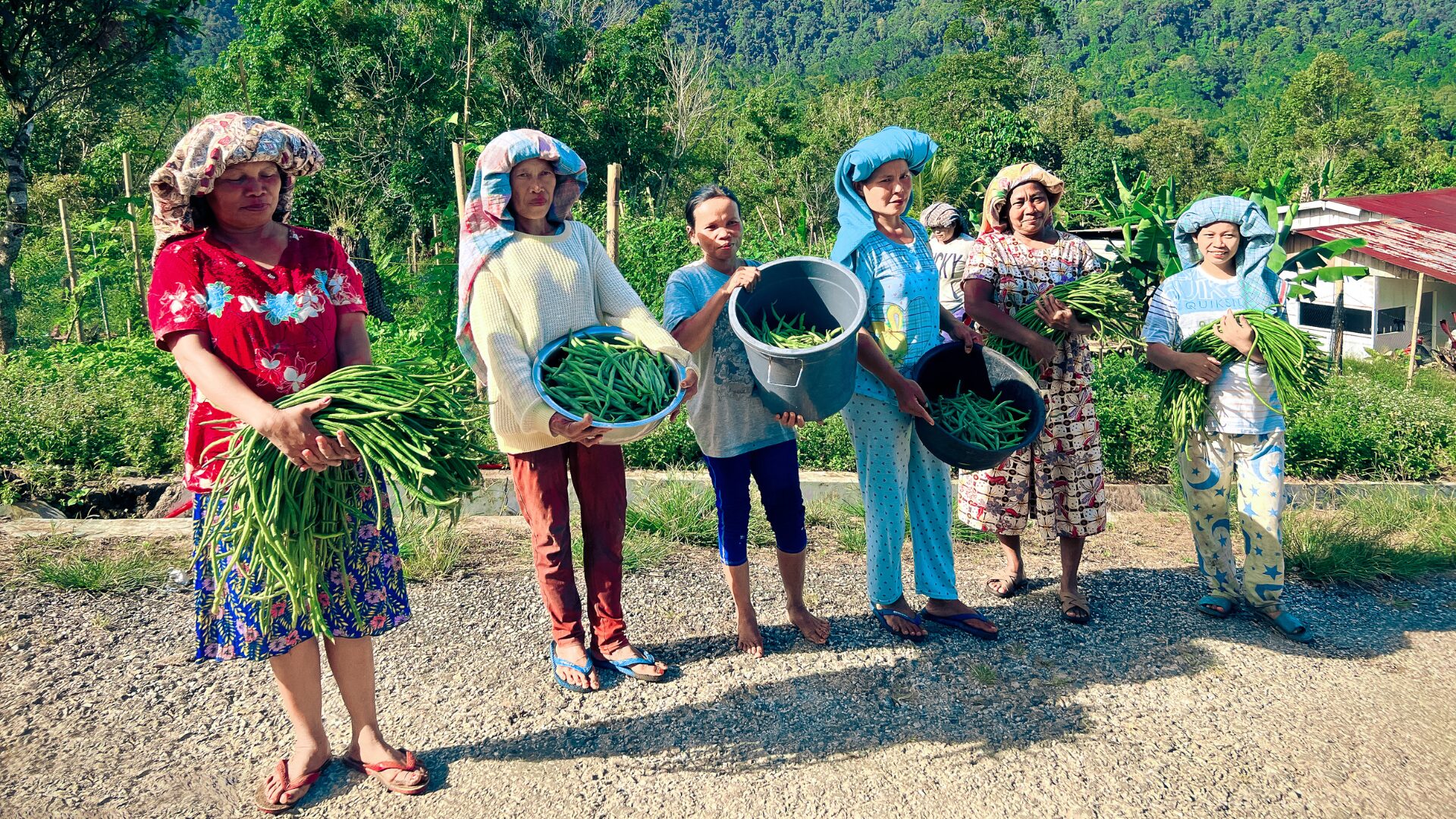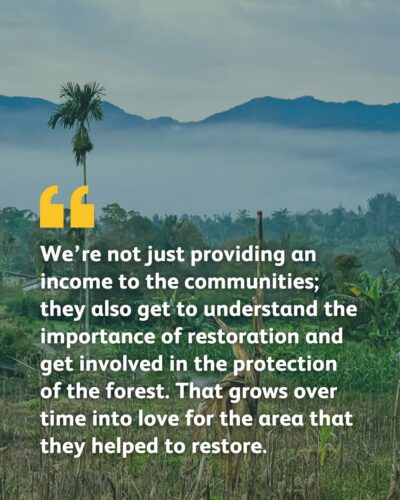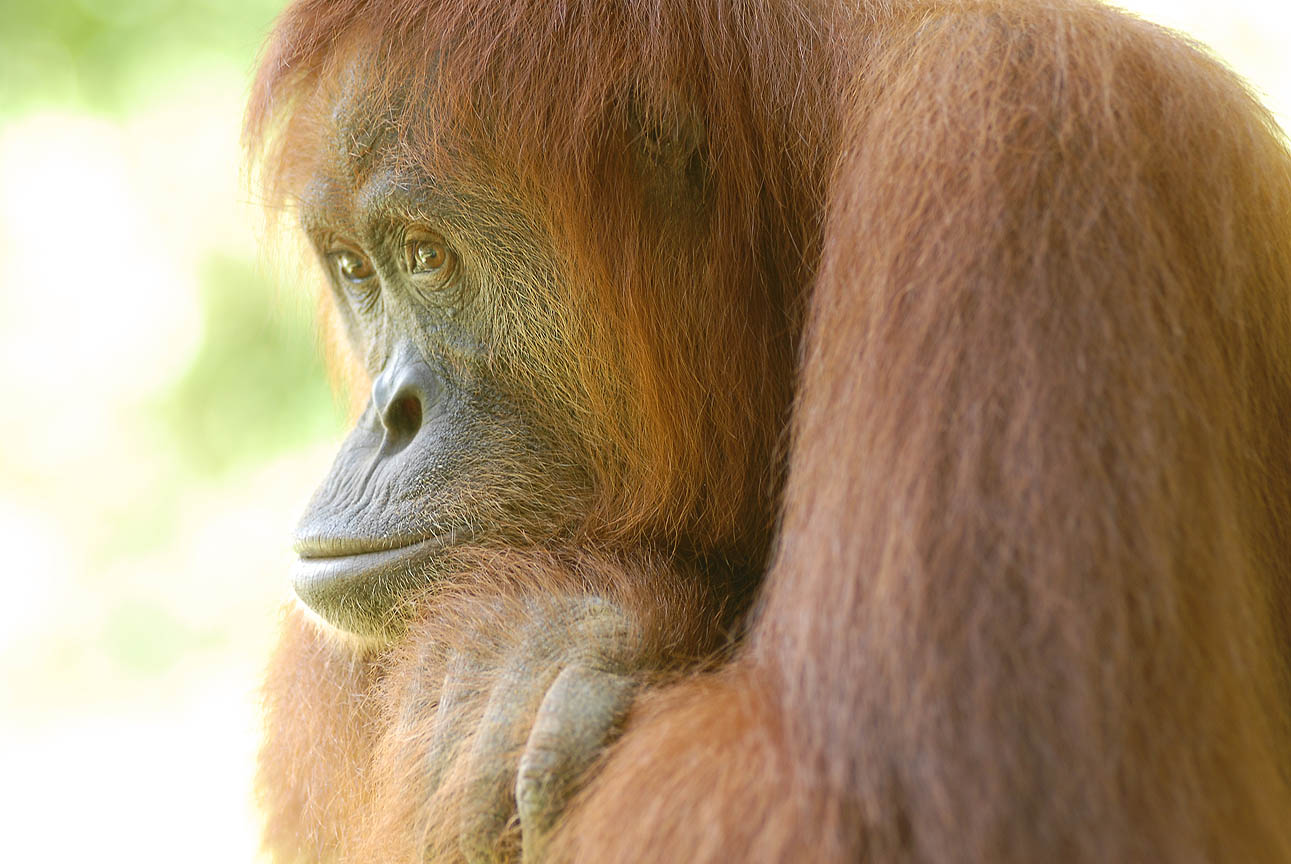
Agroforestry is the deliberate integration of trees and shrubs into a farming system. This approach has been used for centuries by Indigenous people, but it has found renewed support in modern agriculture because of its environmental benefits.
Agroforestry is a data-driven approach which promotes a sustainable and resilient agricultural system – better able to withstand pests, diseases and environmental stressors, such as droughts and heavy rains. Unlike common farming methods, which typically cultivate a single crop (a monoculture), agroforestry diversifies crop production. In turn, biodiversity enhances soil health, nutrient cycling, and pollination, which boosts productivity and crop yields.
In orangutan landscapes, agroforestry helps to restore degraded forest and build resilient ecosystems. It can offer communities both economic and environmental benefits, through diversified income streams, and healthier and more resilient crops. Forest-edge communities will not need to rely on a single crop for their income, and so will be more financially resilient to market fluctuations and crop failures. Additionally, agroforestry represents a return to traditional land-use practices, helping to preserve cultural heritage and community wellbeing.

While agroforestry concentrates on integrating trees into agricultural systems, permaculture considers the entire system. It has a much broader scope, encompassing the design and long-term sustainability of human settlements.
The term “permaculture” was coined in the 1970s and combines “permanent agriculture” with “permanent culture” – emphasising the core social and environment elements of this philosophy. The social aspects of permaculture are key to its success – ensuring basic needs for people, such as clean water, food, shelter and energy, and encouraging a supportive, resilient community.
Permaculture aims to mimic natural ecosystems, drawing on traditional knowledge to create resilient, self-sustaining settlements. This extends beyond agriculture to include housing, energy, water management, and community design. The principles of permaculture were originally developed for commercial food production, but they are relevant and applicable in urban landscapes, architecture, and small gardens.
By supporting sustainable livelihoods through methods such as agroforestry and permaculture, we demonstrate the value of standing forests and create a network of community forest guardians to safeguard wild orangutans.

Our high-level strategy is underpinned by practical measures that make a real difference to forests, people and orangutans. While permaculture provides the overarching design framework, agroforestry offers specific techniques for sustainably managing land and integrating biodiversity into agricultural systems. Together, these practices can build resilience for orangutans, ecosystems, communities and climate – benefitting both people and wildlife.

The key to protecting orangutans is preserving their forest home. And to do this, you must support local people to pursue forest-friendly livelihoods – increasing the profitability of existing land without the need to expand into forests.
Collaborating with frontline partners, we empower landowners—from private companies to smallholder farmers—to implement orangutan-friendly practices. By promoting agroforestry and permaculture, we diversify income, boost crop yields, enhance market access, and enable sustainable forest product harvesting. We also facilitate the creation of vital forest corridors, ensuring safe passage for orangutans and other wildlife through the landscape.
Our partner TaHuKah spent several years working in Sibagindar village in North Sumatra, a critical location in the West Toba landscape. Through an extensive social forestry application, TaHuKah helped the people of Sibagindar gain control over 600ha of their traditional forest. From there, TaHuKah supported the development of forest management plans and over time, the community’s attitude towards the forest changed. Where the village had previously focused on expanding agriculture and establishing plantations, they moved towards agroforestry and ecotourism projects – demonstrating the power of community-centred conservation strategies.
Read MoreWomen farmers, despite producing over half the world’s food, face significant barriers to sustainable farming resources. Research shows that closing this equity gap—by ensuring equal access to land, credit, and training—could increase agricultural yields by up to 30%.
Recognising women’s crucial role in sustainable resource management, we partner with Yayasan Orangutan Sumatera Lestari (OIC) to empower local communities, particularly women, in forest restoration and sustainable agriculture. By establishing community-led tree nurseries and providing permaculture training for housewives, we are enabling women to implement sustainable practices in their farmlands and home gardens. This integrated approach fosters equitable and effective solutions that benefit communities, nature, and the climate.
Read more
You can help protect Sumatra's Orangutans. Click to get updates


